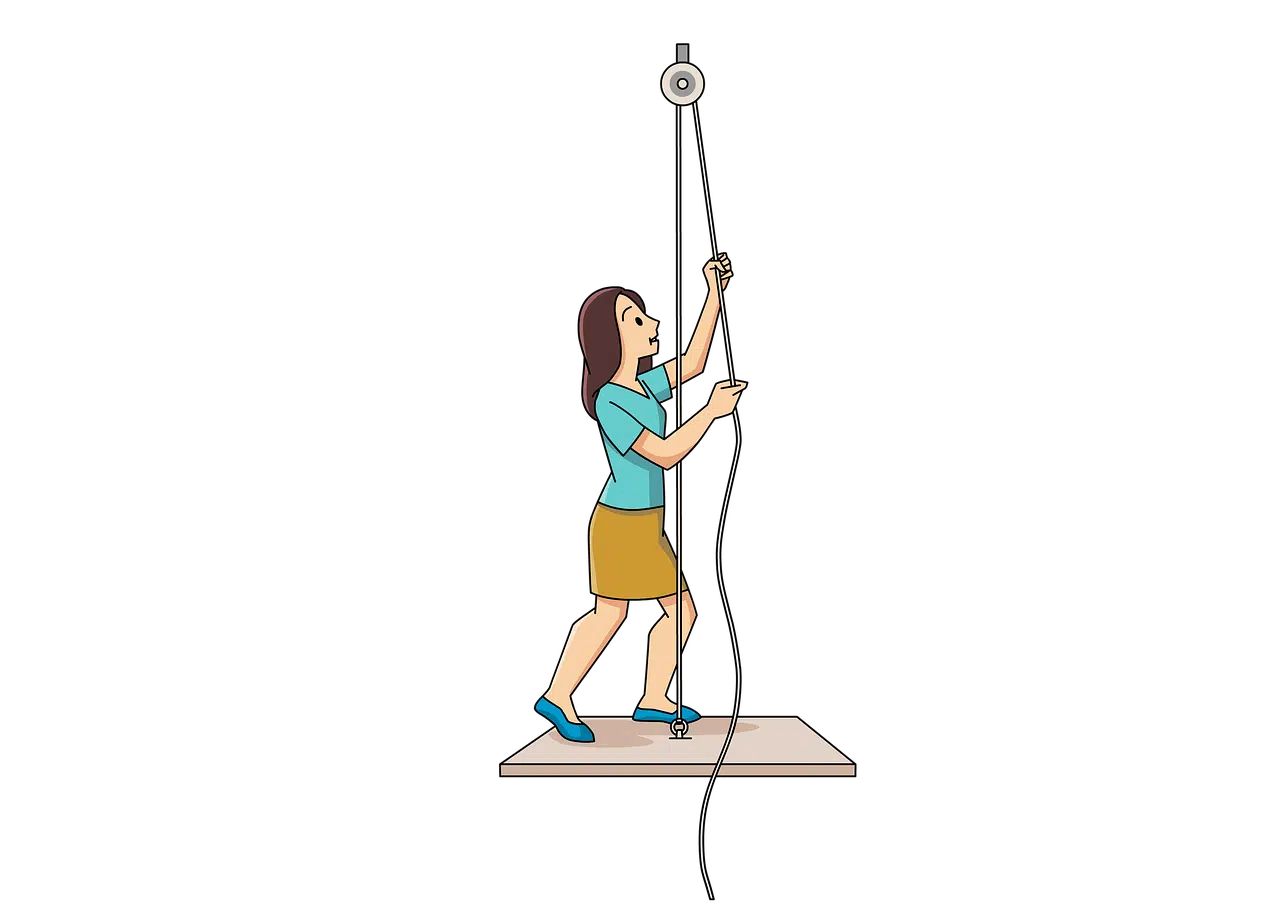
The pulley is a simple machine that has a wheel with a groove.
A pulley is a simple machine formed by a wheel moving around an axis , which has a channel in its circumference. A rope passes through that throat, at the ends of which resistance and power operate.
The pulley - a term from the French poulie - allows force to be transmitted and helps to mobilize a weight. For example: "The bricklayers have installed a pulley to lift the materials to the upper floor" , "We would have to devise a pulley system to be able to move these boxes" , "The firefighters assembled a pulley and, in this way, they managed to rescue the horse that was trapped in the swamp .
The elements of a pulley are the wheel (also known simply as a pulley) with a circumference in which the channel appears (which may be referred to as a groove ); the arms (the armor that surrounds the pulley and has a hook at its end); and the axle (which can be integral with the wheel or attached to the arms).
Pulley types
When the arms are suspended at a specific point and do not experience any translational movement , it is called a fixed pulley . However, if the weapons move vertically during use, the classification corresponds to a moving pulley .
Pulleys can also act independently ( single pulley ) or in conjunction with other pulleys ( combined pulley or compound pulley ). The most common design of the composite pulley is known as a hoist : in this case, the pulleys are divided into two sets (one mobile and the other fixed) and an arbitrary number of pulleys are installed in each set. According to this mechanism, the load is attached to the mobile group.

The pulley is part of the basic operation of elevators.
The history of the elevator
The pulley concept is used daily by a large part of the world's population, even without knowing it, since it constitutes one of the essential parts of the elevator . In fact, their origins date back to several centuries BC, although their shape and the comfort with which the first elevators were operated certainly differed greatly from today.
In Ancient Egypt , for example, there were several systems based on the use of ropes and ramps to move the heavy and voluminous stone bricks that were used to build the pyramids . Similar methods helped maintain irrigation, carrying water from the Nile to the canals. It is fascinating to take into account that both creations took place more than a millennium and a half before Christ.
Later, less than three centuries from year zero, Archimedes designed and manufactured a prototype that was powered by pulleys and ropes . It is worth mentioning that given the absence of automation, it was always necessary for a person, whether the user or a servant, to take on the exhausting work of operating the elevator, using their own physical strength. Taking this into account, it is not surprising that such an ancient invention took so many centuries to become immensely popular.
Unfortunately, and as is the custom of human beings, it was not long before he used the involuntary help of animals. On the other hand, there were hydraulic systems that used wheels to operate elevators and freight elevators. With the Industrial Revolution , elevators were modernized and began to take advantage of steam for propulsion. From that moment on, in just two centuries its design would be perfected at an unprecedented rate, just as happened with many other inventions. In cities where population density requires the construction of tall buildings, the elevator is a necessity; On the other hand, there is doubt about its safety in case of fire.
